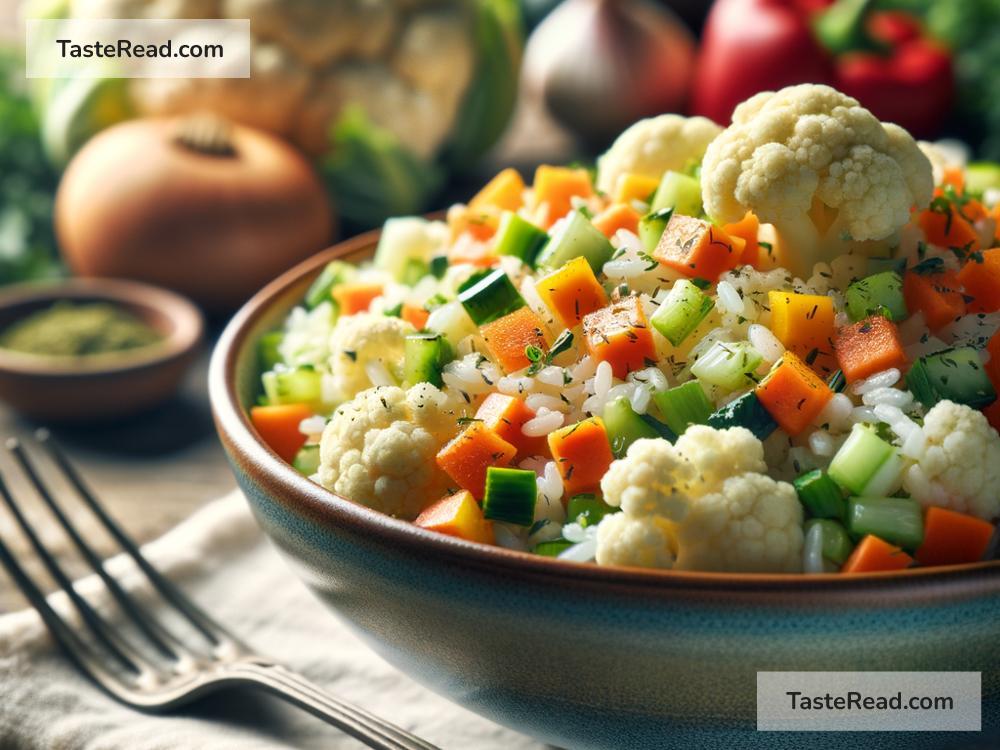The Curious Rise of Cauliflower as a Rice Substitute
In recent years, cauliflower has become incredibly trendy. Once just a humble vegetable served steamed or roasted, it’s now showing up in everything from pizza crusts to tacos. One of its most fascinating transformations, however, is its rise as a rice substitute. Cauliflower rice has become a favorite choice for people looking to eat healthier, reduce their carbs, or experiment with new food ideas. How did this unexpected star become so popular? Let’s explore the curious rise of cauliflower as a rice substitute.
What Is Cauliflower Rice?
Cauliflower rice is made by grating or finely processing raw cauliflower until it resembles grains of rice. Some people do it at home with a box grater or a food processor, and others simply buy pre-packaged cauliflower rice at the grocery store. Once it’s ready, cauliflower rice can be cooked just like regular rice—sautéed in a pan or steamed.
The texture is similar to rice, soft and fluffy when cooked. While the flavor is milder than actual rice, it easily takes on the taste of sauces and spices, making it a versatile ingredient that fits into many dishes.
Cauliflower: The Versatile Vegetable
Part of the cauliflower’s appeal lies in its versatility. As a vegetable in the cruciferous family (along with broccoli and kale), cauliflower is healthy, low in calories, and packed with nutrients. It contains fiber, vitamins C and K, and antioxidants, which makes it ideal for people looking to improve their diets.
What makes cauliflower especially interesting, though, is its ability to take on different forms. It can be mashed like potatoes, blended into creamy sauces, or turned into bread and pizza crust. Its subtle flavor means it can work in both savory and sweet recipes. Cauliflower rice is just one of its many clever uses, but it certainly has become a superstar in the food world.
Why People Are Choosing Cauliflower Rice
The rise of cauliflower rice can be traced to several factors. One major reason is the growing interest in healthier eating. Over time, people have become more aware of the impact of sugar and refined carbs on their health. Traditional white rice and even brown rice are often seen as high-carb staples, and for those trying to lose weight or manage conditions like diabetes, these grains may not be ideal.
Cauliflower rice, on the other hand, is low in carbs and calories. It fits perfectly into low-carb diets like keto, where people aim to cut back on carbs and focus on higher fats and proteins. It’s also gluten-free, making it a great option for people with celiac disease or those simply avoiding gluten.
Another reason cauliflower rice has gained traction is the push for more plant-based diets. Many people are trying to replace animal products in their meals or just eat more vegetables overall. Using cauliflower rice is an easy way to sneak in an extra serving of vegetables without giving up the texture of traditional grains.
The Convenience Factor
The rise of pre-packaged cauliflower rice has played a significant role in its popularity. Food companies quickly noticed the demand for healthier alternatives, and now, cauliflower rice is widely available in supermarkets. Ready-to-cook versions are sold both fresh and frozen, making it easier than ever for busy people to incorporate them into their meals.
For those who prefer to make it at home, cauliflower rice is simple to prepare. With a grater or food processor, you can turn a whole cauliflower into “rice” in just minutes. It’s affordable, too. A single cauliflower head can yield several servings of rice, which can be stored in the fridge or freezer for later.
Creative Uses of Cauliflower Rice
Cauliflower rice isn’t just a stand-in for traditional rice — it’s a versatile ingredient that can be used in many unique ways. It works great in fried rice recipes and pairs well with stir-fried veggies, soy sauce, and scrambled eggs. It can also be used in burrito bowls, stuffed peppers, and as a side dish for curries.
More adventurous cooks have found creative ways to incorporate cauliflower rice into recipes. It can be used as a base for veggie-packed casseroles, to bulk up salads, or even as part of breakfast dishes. Some people mix cauliflower rice with eggs, cheese, and spices to create fritters or patties.
The Downsides of Cauliflower Rice
While cauliflower rice is celebrated for its health benefits, it’s not without downsides. One common complaint is its water content. Cauliflower can release moisture as it cooks, which may affect the texture of certain dishes. To avoid soggy meals, some cooks recommend squeezing the raw cauliflower rice with a kitchen towel to remove excess water before cooking.
Another drawback is that it doesn’t taste exactly like rice. For those who love the starchiness and chewy texture of traditional rice, the substitute might not satisfy all expectations.
Finally, buying pre-packaged cauliflower rice can be pricier than buying regular rice, though making it yourself is still budget-friendly.
Conclusion
The rise of cauliflower as a rice substitute is a reminder of how creative and adaptable food trends can be. Once seen as a simple side dish, cauliflower now stands proudly in the spotlight as a healthier alternative to traditional grains. Whether you’re trying to reduce carbs, eat more vegetables, or explore new flavors, cauliflower rice offers endless possibilities. So next time you spot a head of cauliflower at the grocery store, why not try turning it into rice? You just might discover a fun and healthy new way to enjoy this versatile vegetable.


